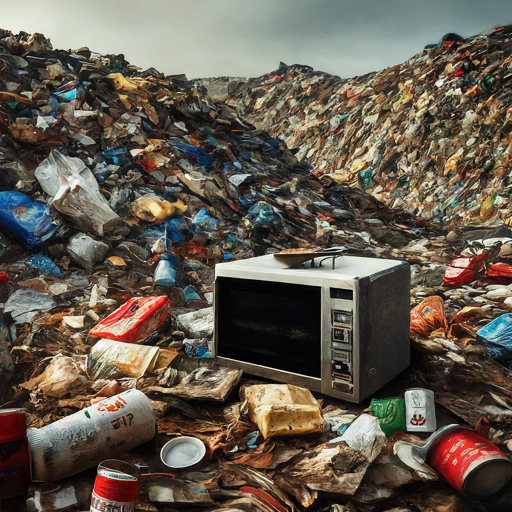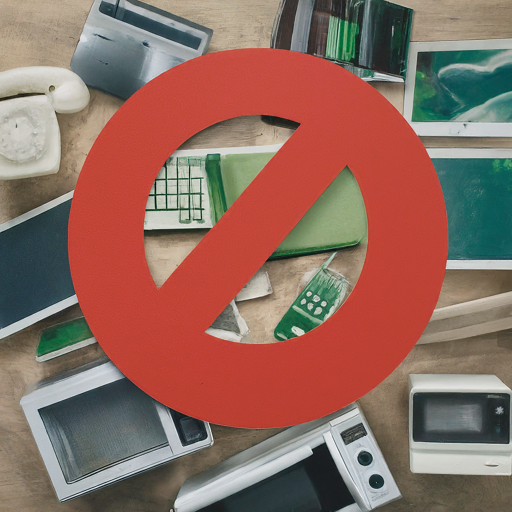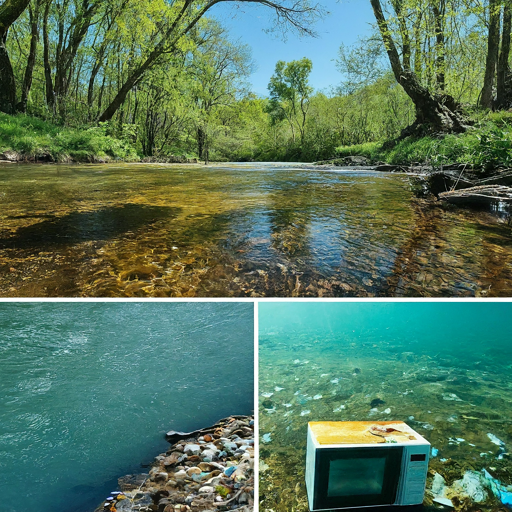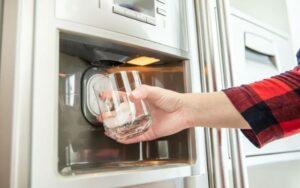Imagine your trusty microwave transformed into a rusty, chemical-leaking time bomb buried in a landfill. Scary, right? Yet, in 2022, we tossed out an insane 50 million tons of e-waste, poisoning the same earth that grows our food. It’s time to break this toxic cycle!
If you’ve got an outdated microwave collecting dust, let’s ditch it the right way – and maybe even unleash some DIY creativity along the way.
But before throwing it away, why not try to fix it? You might be surprised at how simple the solution is!

How to Dispose of a Microwave at Recycling Centers
Ever wondered what happens to your old microwave when you upgrade? If it ends up in a landfill, it’s not just taking up space – it could be leaking chemicals into the environment. Let’s make sure that doesn’t happen!
Here’s how to recycle that microwave the right way:
Step 1: Know the Rules
New York has a great website for e-waste info. Bookmark it for what you can recycle and where to find drop-off spots.
Step 2: Find Your Local Recycling Options
Don’t just rely on general recycling websites. Check these New York-specific resources too:
- NYC Sanitation’s “What to Recycle” Page
- Your County’s Website: if you are in New York, Search for “[Your County Name] + e-waste disposal.”
- Manufacturer Take-Back: Does the company that made your microwave have a recycling program?
- Online Tools: Tools like RecycleSearch are helpful, but always double-check information with these New York specific resources:
👉Quick Tips:
- Call ahead! Some recycling places might charge a small fee for microwaves.
- Still working? Consider donating it. Charities and thrift stores often accept electronics.
- Don’t even think about tossing it in the regular trash – New York’s got e-waste laws!
Need more help? Your local recycling experts or the NY DEC website can answer all your questions.
Microwave Disposal Laws: What You Need to Know ⚠️

Okay, maybe this isn’t the most exciting topic ever… but trust me, a few minutes here could save you a headache (and some cash in fines!). New York takes e-waste seriously, so let’s break down the basics:
✅ YES, you need to:
- Check official sources: The NY State E-waste website is your go-to for the latest rules.
- Find the right drop-off: Your town/county website has the scoop on locations and fees.
- Ask the maker: Your microwave’s company might have a free recycling program.
- Donate if it works! Charities and thrift stores love working electronics.
❌ NO, you can’t:
- Toss it in the regular trash! Microwaves have nasty stuff that doesn’t belong in landfills.
- Assume curbside pickup is okay. Even tiny microwaves need special recycling.
Why Dispose of Your Microwave Responsibly? 🌍

Imagine your kitchen if the microwave never went away. Now picture that multiplied a million times – that’s what landfills are turning into with all our discarded electronics.
To learn more about the environmental impact of microwaves, check this out here.
It’s not just an eyesore – it’s a danger.
- What happens in the landfill? Microwaves rust, break down, and release toxic chemicals into the soil and the water we all rely on. That’s the water we drink and grow food with… the water that sustains communities here and across the globe.
- The Global Crisis: Our planet is choked with e-waste, poisoning the same land and water our families depend on. In many countries, this waste is handled dangerously, harming entire communities.
- Can recycling make a difference? Absolutely! Microwaves contain valuable metals that don’t need to be mined from the earth. It means less pollution, less destruction of precious habitats around the world.
A Story to Remember:
Maria’s village used to get drinking water from the river. Now, it’s filled with chemicals seeping from an illegal e-waste dump. Her children get sick, and she fears for the future.
Every time we recycle responsibly, we help prevent stories like Maria’s.
Expert Insight: “Taking the time to dispose of my old microwave properly makes me feel good. I know I’m doing my small part to keep our waterways clean and protect the environment for future generations.” – John Bird, Boat Basin Cafe
Creative Ways to Repurpose Your Old Microwave 💡

Ready to get your DIY on? Let’s turn that busted microwave into something awesome! Safety first, of course – if it’s sparking or seriously broken, it’s time to recycle.
But if it just won’t heat up anymore… it’s time for a makeover!
Can I sell parts from my old microwave?
Sell Those Spare Parts: Believe it or not, there might be someone out there looking for parts from your exact microwave model! (Hey, we all have our quirks.) Get some cash back and help someone else keep their appliance alive.
Upcycling ideas for the crafty folks
Do you have a DIY streak? Here are some fun upcycling projects to consider:
- Mini-Greenhouse: Got a green thumb? With some tinkering, your microwave could be a perfect little plant starter.
- Unique Storage: Clean it out, pop in some shelves, and voila! Quirky storage for anything your heart desires.
- Themed Planter: Succulents would look awesome in a microwave-turned-planter. Bonus points if you paint it a funky color!
Cafe Inspiration: Okay, I never repurposed a whole microwave, but at the cafe, we loved giving old stuff new life. A beat-up food processor became the coolest display for vintage buttons! It’s all about seeing the potential.
Not the DIY type? No worries! You can still responsibly ditch that microwave. Search “free e-waste drop-off near me” to get started.
FAQs
Got questions? It’s normal! Here are some of the most common ones people ask about getting rid of old microwaves:
Can I just toss my old microwave in the recycling?
Nope! E-waste (that’s electronics, for the uninitiated) needs special handling. Sorry, no curbside pickup for this one.
Do scrap metal places want my busted microwave?
Heck yeah! They love the metal inside. You might even make a few bucks.
Can I throw a microwave in a skip?
Most skip companies will take it, but always call ahead – some charge extra for appliances.
Ugh, I live in an apartment. How do I get rid of this giant microwave?
Check if the company who made it has a take-back program. Also, some charities offer pick-up services – score! Your city might even have e-waste disposal events with pick-up options.
Conclusion
So there you have it! Ditching a microwave the right way is easier than you think. New York has clear rules and tons of resources to make it happen.
Remember, it’s not just about decluttering your kitchen – responsible disposal keeps our environment safer and healthier for everyone. Whether you recycle, donate, or try a little upcycling magic, you’re doing a good thing.






